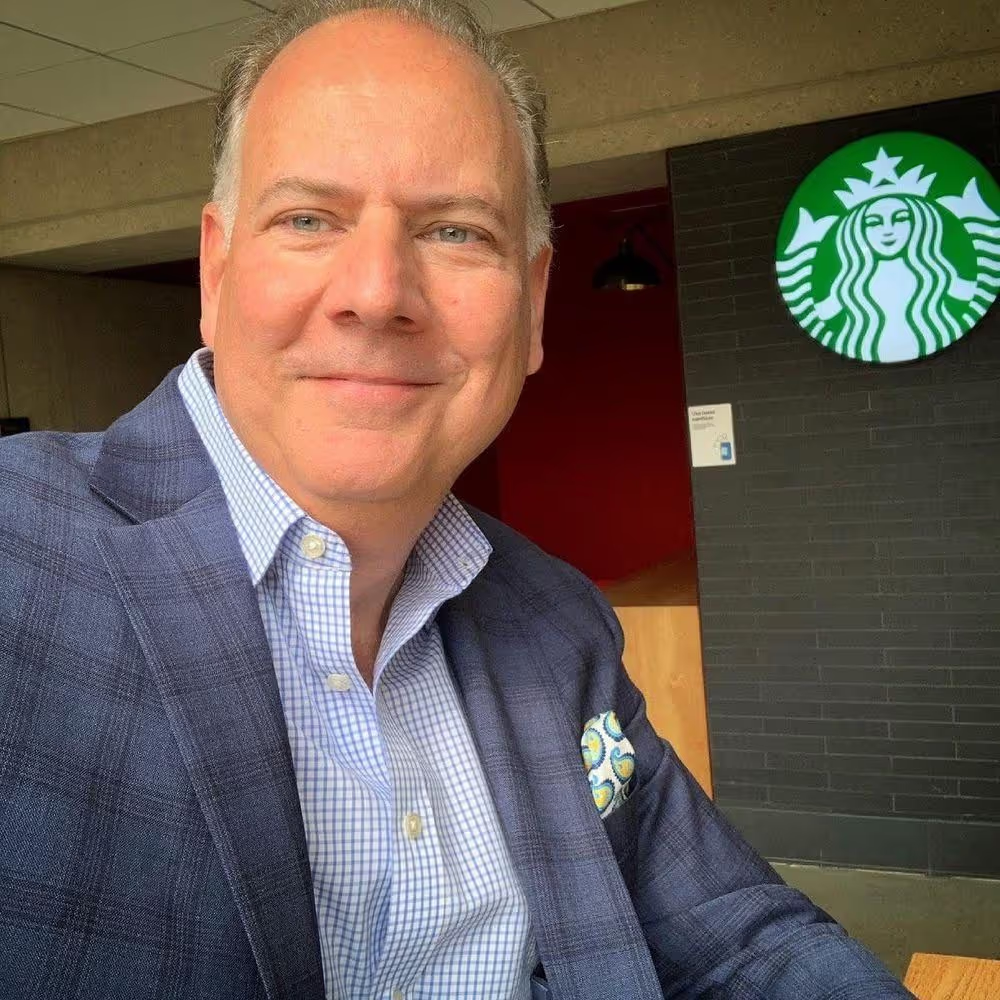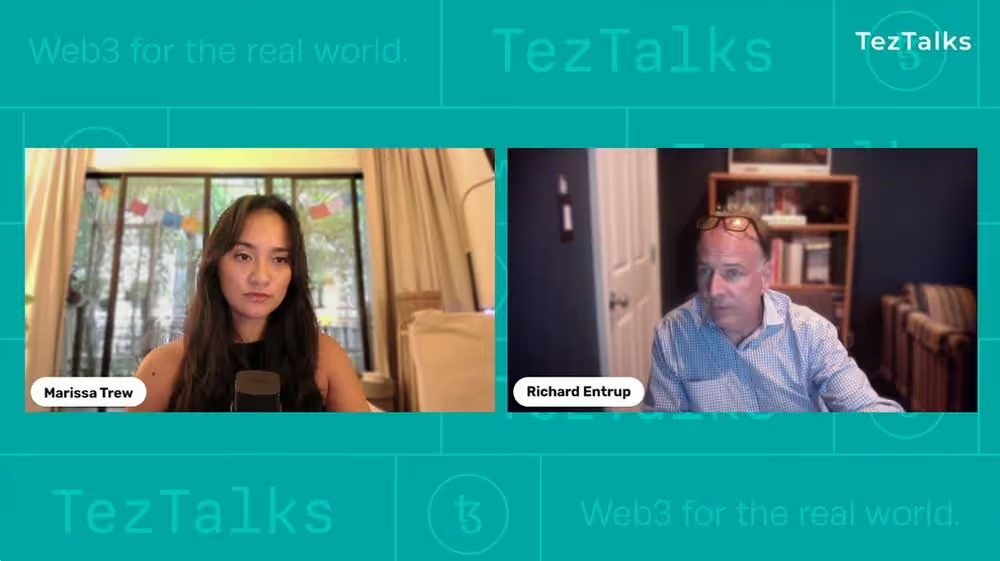A Bird's Eye View: Exploring Tezos' Place In The World of Digital Art With Richard Entrup
Innovator/Futurist Richard Entrup discusses the state of digital art and NFTs in 2023 and where Tezos fits into this complex and evolving puzzle.
7 minute read

Richard Entrup is the senior advisor of Enterprise Innovation at KPMG. As a globally-recognized startup advisor/investor, and former prominent senior tech executive with huge brands ranging from Verizon to Christie’s to Time Warner and beyond, he’s also an avid art collector who has been exploring the rapidly-evolving world of digital art, NFTs, and blockchain technology for several years.
With bonafides like this in his resumé, when Richard Entrup expresses his views on how things are shaping up in the digital art/NFT world and what the future might look like, it would be well served to stop what you’re doing and listen up. So, that’s just what I did.
The world of digital art and NFTs is transforming rapidly. Gone are the boom times of 2021, where pretty much everyone on the planet was clamoring to pour money into the burgeoning NFT space. In their place, we find ourselves at a digital crossroads. At this crossroads, some are prepared to write the NFT space off entirely as nothing more than a hype-driven blip in the ongoing history of digital technology, while others are hellbent on building and innovating right through the global market downturn we’ve all watched unfold in the space.
To hear Richard Entrup — an established investor, collector, and innovator in the Web 3.0 arena — tell it, the true potential of these blockchain-powered tools is still taking shape, and is only beginning to reveal its true, sustainable nature.

“I think brands still have a great opportunity to engage, convert, and retain customers using Web 3.0 blockchain technology for rewards programs. Brands like Nike and Adidas, luxury retail brands are creating digital goods and they’re selling them for real commerce in fiat or crypto. You get the advantage of the digital good being an NFT, which means you can buy it and then sell it, and then the original owner — be it a company or a person — gets a royalty on that. Those are all tenets of blockchain — authenticity, provenance, and royalties, downstream. The art world still doesn’t support that. If George Condo or Damien Hurst creates a painting, they sell it once. Then it trickles through the industry, through dealers and auction houses and fairs. With NFTs, they can sell it once and then get royalties downstream.”
Here in the Tezos ecosystem, where- by design- collectors and artists are sheltered to a large degree from the boom-and-bust cycle that’s unfolded in the larger NFT space, the Tezos art community made it a point to hold the line and keep the focus on art and artists, rather than the speculative potential of the work.
"The intentions are different. The Tezos collector is collecting art. I think the Tezos collector cares less about the valuation and the opportunity for gaining equity in the investment. During the NFT boom, it was a very different intention, especially with PFPs and collectibles. FOMO kicked in, and then the masses were jumping on blockchain and crypto just to get a piece of this get rich quick kind of thing with these 10,000 PFP drops that was just exhausting to watch. Now a lot of those same folks that were chasing PFPs and collectibles are now transitioning and starting to appreciate the artists for their art, which I think is a very interesting dynamic.
Now we’re back to the original intention of this technology being applied to this sector, and that is: provenance and authenticity being validated in an immutable way. That’s what blockchain afford the art world at the end of the day — following all the fanfare."
And, as the focus of those active in the space circle back to that original intention of the blockchain-powered tools that enabled all of this in first place, the opportunity for Tezos to carve out a more significant role in the next iteration of the art-blockchain relationship is very real, and one which should not be taken lightly.
“I’m an art collector. I collect physical art as well as digital art. I always felt that Tezos was all about the art first. The prices were much lower, which is an interesting dynamic. I found artists on Tezos where I could actually print their work out and hang it on my wall. The fact that it’s NFTs is kind of secondary. It’s all subjective from a collector’s perspective, but I always felt that Tezos was catering to more of the art collectors and less of the folks chasing PFPs and collectibles.”
“The other interesting dynamic in Tezos is that the Tezos artists collect each other with great passion. They collect each others’ work. It’s a wonderful thing. Collectors can come and that’s how you find out about other work, by looking at who’s collecting what.”
Indeed, Tezos’ digital art community has emerged from a crowded field as an important cultural leader in the space. The Tezos ecosystem features some of the finest NFT marketplaces the blockchain space has to offer, and has become a crucial beacon for new artists entering the space. Richard Entrup is quick to point out, however, that the true potential of the NFT is about a whole lot more than just art. The scope of this technology, he believes, is much wider than that, something he spoke about during his recent appearance on TezTalks Radio.

“It’s a huge digital marketing channel here, let’s face it. It’s not just about art. It’s about engagement and conversion and retention of customers and a customer experience that’s fun and engaging. Even Starbucks is dabbling with reward programs that might be Web 3.0 blockchain-based. I think the initial tenets and promise of blockchain, as it relates to immutability and engagement, and royalties downstream and all that stuff, is still very viable now that we’re past this PFP craze.”
It’s unclear at this stage exactly what the next iteration of NFTs in the larger blockchain arena will look like, but that doesn’t mean it’s not coming. To hear Richard Entrup tell it, in fact, it may very well already be under way, even if many of us may not be entirely aware of it just yet.
The state of California is now using blockchain for DMV records - transactions per second
As the world rolls on toward the Web 3.0-driven digital future to come, big changes are afoot. Although the global NFT boom appears to have cooled down, a more sustainable economy has emerged from its ashes — one founded on top-notch artists and their stunning works, collectors who appreciate the intrinsic value NFTs have to offer, and a very real for brands to build upon the progress that has been created. Although this reality may not be obvious to the public at large just yet, there are folks like Richard Entrup who can envision the potential in this burgeoning space moving forward, and a key role for Tezos within it. And if that’s not something for this community to get excited about, I don’t know what is!